-
 Bitcoin
Bitcoin $117400
-0.46% -
 Ethereum
Ethereum $3768
0.60% -
 XRP
XRP $3.551
2.09% -
 Tether USDt
Tether USDt $1.000
0.00% -
 Solana
Solana $203.2
11.30% -
 BNB
BNB $770.9
1.92% -
 USDC
USDC $0.9999
0.01% -
 Dogecoin
Dogecoin $0.2709
-0.02% -
 Cardano
Cardano $0.9024
4.49% -
 TRON
TRON $0.3139
0.60% -
 Hyperliquid
Hyperliquid $45.60
-1.41% -
 Stellar
Stellar $0.4730
-1.34% -
 Sui
Sui $4.025
2.15% -
 Chainlink
Chainlink $19.79
2.19% -
 Hedera
Hedera $0.2724
-2.39% -
 Avalanche
Avalanche $25.93
3.05% -
 Bitcoin Cash
Bitcoin Cash $524.0
-1.83% -
 Shiba Inu
Shiba Inu $0.00001558
0.50% -
 Litecoin
Litecoin $116.7
-0.30% -
 UNUS SED LEO
UNUS SED LEO $8.996
0.00% -
 Toncoin
Toncoin $3.334
1.83% -
 Polkadot
Polkadot $4.506
0.34% -
 Uniswap
Uniswap $10.99
4.83% -
 Ethena USDe
Ethena USDe $1.001
0.03% -
 Pepe
Pepe $0.00001461
3.17% -
 Monero
Monero $320.3
-1.01% -
 Bitget Token
Bitget Token $4.935
0.36% -
 Dai
Dai $0.9998
0.00% -
 Aave
Aave $322.4
-1.25% -
 Bittensor
Bittensor $455.6
9.33%
Why is the price of stETH not exactly 1 ETH?
stETH, issued by Lido, tracks ETH value but may trade below or above 1:1 due to market demand, liquidity, and Ethereum's staking withdrawal constraints.
Jul 19, 2025 at 11:56 am
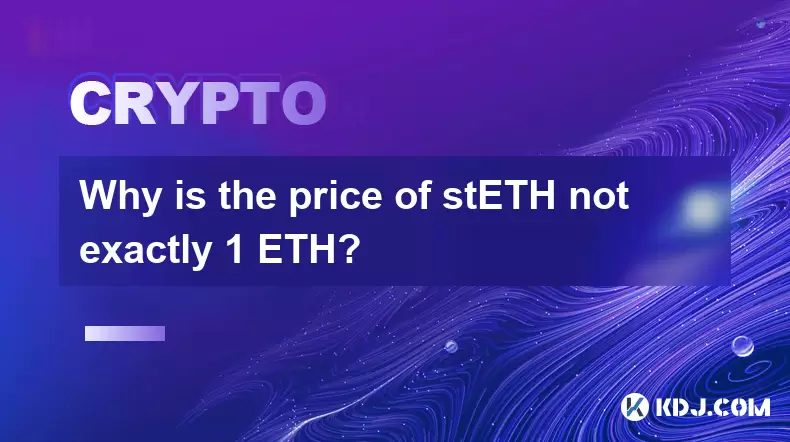
Understanding the stETH and ETH Relationship
stETH (staked ETH) is a token issued by Lido Finance, representing the user's share of staked ETH on the Ethereum 2.0 network. When users deposit ETH into the Lido protocol, they receive stETH tokens in return, which are meant to track the value of ETH over time, including staking rewards. However, despite this design, stETH does not always trade at exactly 1:1 with ETH.
This discrepancy arises due to a combination of market forces, liquidity constraints, and technical limitations of the Ethereum network during its transition from Proof of Work (PoW) to Proof of Stake (PoS). Unlike ETH, which is fully transferable and usable in DeFi protocols immediately, stETH cannot be directly withdrawn or used in all applications, especially before the Ethereum Shanghai upgrade.
Market Dynamics Influencing stETH Price
The price of stETH fluctuates based on supply and demand dynamics in the market. Since stETH is not redeemable for ETH immediately, its value is determined by what traders are willing to pay for it on decentralized exchanges like Curve Finance or centralized platforms.
- Liquidity pools such as stETH/ETH on Curve play a crucial role in determining the exchange rate between stETH and ETH.
- If there is high demand for ETH and low liquidity for stETH, the price of stETH may drop below 1 ETH.
- Conversely, if stETH is in high demand (e.g., for yield farming or leverage strategies), its price may rise above 1 ETH.
These price deviations are temporary in nature but reflect the current market sentiment and liquidity conditions.
Staking Rewards and Accrual Mechanism
One of the primary attractions of stETH is that it accrues staking rewards automatically. Over time, each stETH token represents more than 1 ETH due to these rewards. However, this accrual mechanism is not reflected in the token’s exchange rate but rather in the underlying value.
For example:
- Initially, 1 stETH = 1 ETH.
- After a month of staking, the protocol increases the ETH backing per stETH, but the token price may not reflect this immediately in the market.
- The price divergence occurs because the rewards are not liquid and cannot be withdrawn until the withdrawal functionality is enabled on the Ethereum network.
This creates a disconnect between the theoretical value of stETH and its market-traded value, especially during periods of high volatility or uncertainty.
Impact of Ethereum’s Upgrade Timeline
The Ethereum network's upgrade to PoS introduced a lock-in period for staked ETH. Until the Shanghai upgrade, users who staked via the official beacon chain or platforms like Lido could not withdraw their ETH or stETH.
This illiquidity caused stETH to trade at a discount to ETH. Market participants priced in the risk and time value of money, leading to a market price below 1 ETH. The discount was more pronounced during periods of high volatility or bearish sentiment, where liquidity and risk aversion played a larger role.
Even after the Shanghai upgrade enabled withdrawals, market confidence and redemption rates influenced the price of stETH. If the redemption queue was long, or if users preferred ETH over stETH, the price deviation persisted.
Role of Arbitrage and Trading Mechanisms
In an efficient market, arbitrageurs would act to eliminate price discrepancies between stETH and ETH. However, several barriers to arbitrage exist:
- Capital constraints: Arbitrage requires holding both assets, which may not be feasible for many traders.
- Gas costs and slippage: Trading on decentralized exchanges involves transaction fees and slippage, which can erode arbitrage profits.
- Smart contract risk: Holding stETH involves trusting the Lido protocol and its underlying smart contracts, which may not be acceptable to all arbitrageurs.
These factors reduce the effectiveness of arbitrage, allowing price deviations to persist longer than expected.
Frequently Asked Questions
Q: Can stETH ever be worth more than ETH?
Yes, under certain market conditions, stETH can trade at a premium. This typically happens when demand for stETH increases due to yield strategies or supply of ETH is constrained in liquidity pools.
Q: How does the stETH price affect DeFi users?
DeFi users who use stETH as collateral or liquidity provider (LP) tokens may face impermanent loss or collateral value fluctuations if the price of stETH diverges from ETH.
Q: Is stETH a safe asset to hold long-term?
stETH is generally considered safe as it is backed by real ETH on the beacon chain. However, holders should be aware of protocol risks, market volatility, and liquidity conditions that may affect short-term value.
Q: What happens to stETH after the Ethereum Shanghai upgrade?
After the Shanghai upgrade, users can withdraw their ETH from the staking contract, which improves liquidity and price discovery. However, market forces still influence the price, and stETH may not always trade at 1:1 with ETH.
Disclaimer:info@kdj.com
The information provided is not trading advice. kdj.com does not assume any responsibility for any investments made based on the information provided in this article. Cryptocurrencies are highly volatile and it is highly recommended that you invest with caution after thorough research!
If you believe that the content used on this website infringes your copyright, please contact us immediately (info@kdj.com) and we will delete it promptly.
- Bitcoin, Trump Media, and a Stock Boost: A New York Minute on Crypto & Politics
- 2025-07-22 15:30:12
- Solana Ecosystem Tokens Surge: Riding the Wave to New Highs?
- 2025-07-22 15:30:12
- Bitcoin, Render Token, and Resistance Levels: A New Yorker's Take
- 2025-07-22 15:50:12
- MoonBull's Whitelist Mania: Your Last Shot at 100x Crypto Gains?
- 2025-07-22 10:30:12
- Meme Coins in 2025: Explosive Gains or Fading Fad?
- 2025-07-22 10:30:12
- Kim Keon-hee Crypto Probe: Scandal Rocks South Korea's Political Scene
- 2025-07-22 10:50:12
Related knowledge
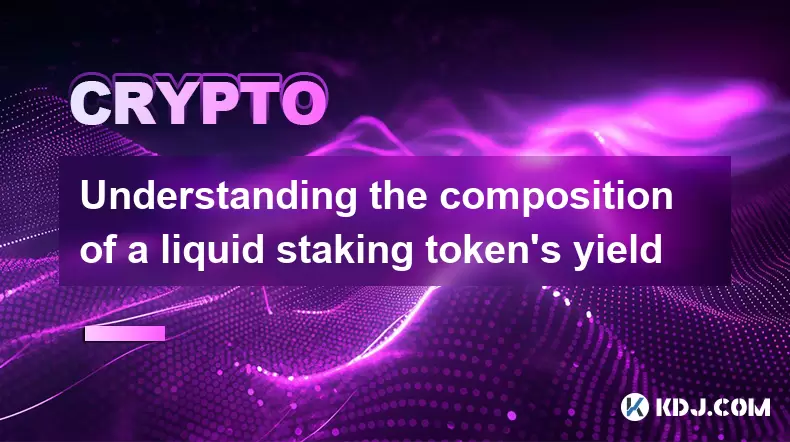
Understanding the composition of a liquid staking token's yield
Jul 20,2025 at 09:07am
What Is a Liquid Staking Token?A liquid staking token is a representative asset issued to users who stake their native cryptocurrency on a proof-of-st...
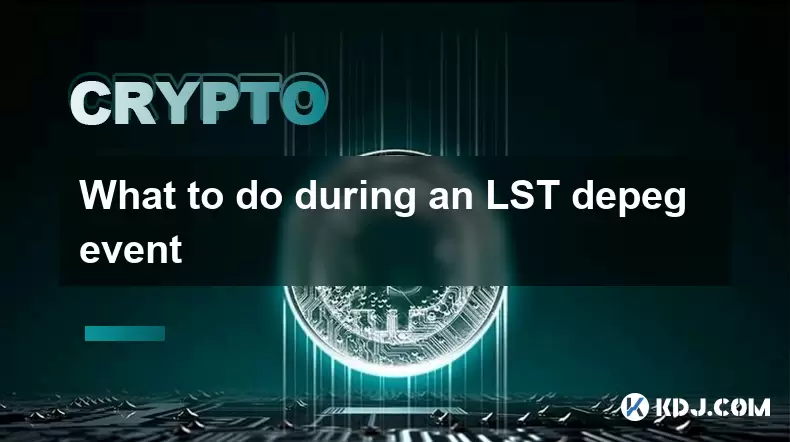
What to do during an LST depeg event
Jul 20,2025 at 04:57pm
Understanding LST Depeg EventsAn LST (Liquid Staking Token) depeg event occurs when the token, which is typically pegged to the value of the underlyin...
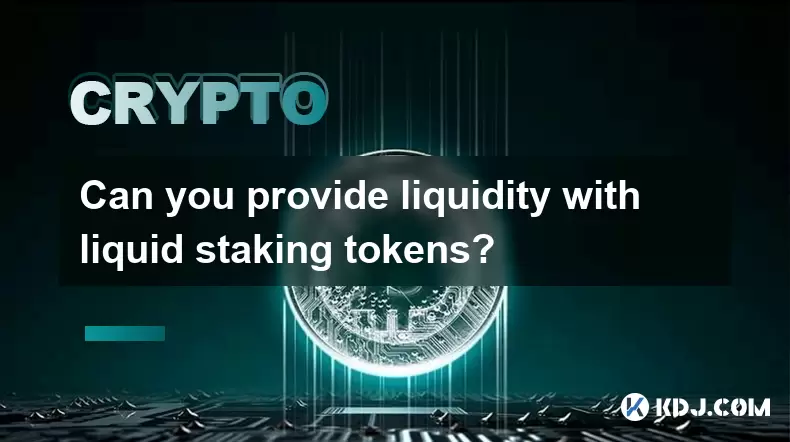
Can you provide liquidity with liquid staking tokens?
Jul 22,2025 at 10:22am
Understanding Liquid Staking TokensLiquid staking tokens (LSTs) are derivative tokens that represent staked assets on a proof-of-stake (PoS) blockchai...
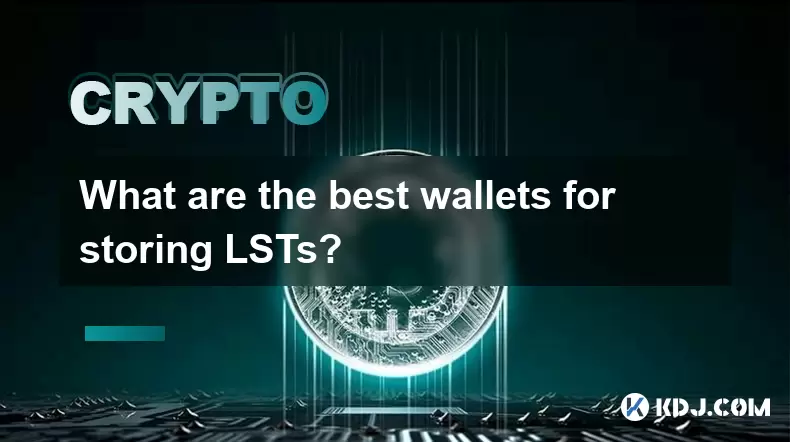
What are the best wallets for storing LSTs?
Jul 21,2025 at 03:14pm
Understanding LSTs and the Need for Secure StorageLSTs, or Liquid Staking Tokens, are derivative tokens representing staked assets on a blockchain. Wh...
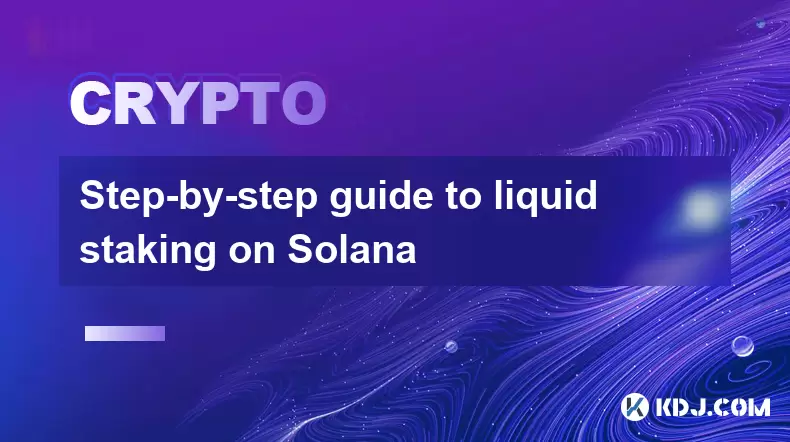
Step-by-step guide to liquid staking on Solana
Jul 20,2025 at 06:42am
What is Liquid Staking on Solana?Liquid staking is a mechanism that allows users to stake their cryptocurrency while retaining liquidity through the i...
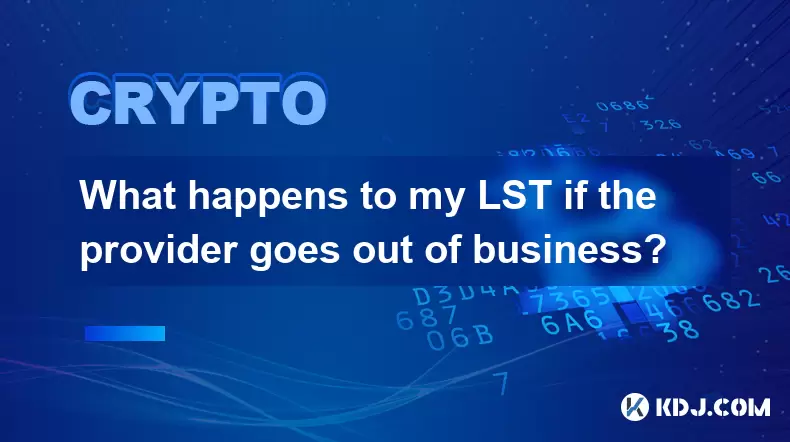
What happens to my LST if the provider goes out of business?
Jul 19,2025 at 10:21pm
Understanding LST and Its Dependence on ProvidersWhen you stake your Ethereum (ETH) through a Liquid Staking Token (LST) provider, you receive a token...

Understanding the composition of a liquid staking token's yield
Jul 20,2025 at 09:07am
What Is a Liquid Staking Token?A liquid staking token is a representative asset issued to users who stake their native cryptocurrency on a proof-of-st...

What to do during an LST depeg event
Jul 20,2025 at 04:57pm
Understanding LST Depeg EventsAn LST (Liquid Staking Token) depeg event occurs when the token, which is typically pegged to the value of the underlyin...

Can you provide liquidity with liquid staking tokens?
Jul 22,2025 at 10:22am
Understanding Liquid Staking TokensLiquid staking tokens (LSTs) are derivative tokens that represent staked assets on a proof-of-stake (PoS) blockchai...

What are the best wallets for storing LSTs?
Jul 21,2025 at 03:14pm
Understanding LSTs and the Need for Secure StorageLSTs, or Liquid Staking Tokens, are derivative tokens representing staked assets on a blockchain. Wh...

Step-by-step guide to liquid staking on Solana
Jul 20,2025 at 06:42am
What is Liquid Staking on Solana?Liquid staking is a mechanism that allows users to stake their cryptocurrency while retaining liquidity through the i...

What happens to my LST if the provider goes out of business?
Jul 19,2025 at 10:21pm
Understanding LST and Its Dependence on ProvidersWhen you stake your Ethereum (ETH) through a Liquid Staking Token (LST) provider, you receive a token...
See all articles

























































































